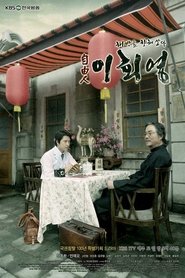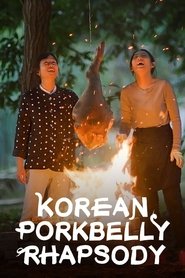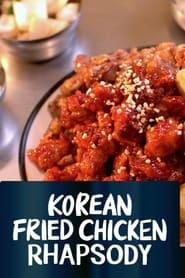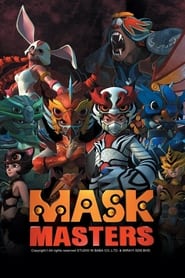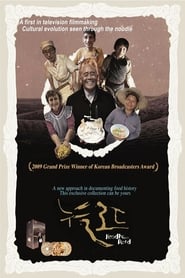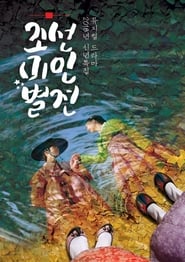Kbs1 TV Series - Page 5
-
Freedom Fighter, Lee Hoe-young
2010
Freedom Fighter, Lee Hoe-young is a 2010 South Korean historical television series, starring Jung Dong-hwan, Ahn Jae-mo, Lee Ah-yi, Hong Il-kwon and Kwon Oh-joong. Based on the life of Korean independence fighter Lee Hoe-yeong, the drama was made to commemorate the centenary of the Forced Annexation of Korea by Japan. Its premiere coincided with the signing of the annexation treaty on August 21, 1910, and the drama aired on KBS1 from August 29 to September 12, 2010 on Saturdays and Sundays at 21:05 for 5 episodes. This was the third and last of the "noblesse oblige" series produced by KBS in 2010, following The Reputable Family and The Great Merchant. At the end of the drama, a short documentary about Lee Hoe-young aired, including an interview with his sons, Lee Kyu-chang and Lee Kyu-dong. -
걸어서 세계속으로
2005
걸어서 세계속으로
2005
Journey to the cities around the world and look at them through the eyes of the traveler. -
Korean Pork Belly Rhapsody
2020
star 7.3A love letter to pork belly -- a perennial favorite among Koreans of every generation -- unfolds with an exploration of its history and cooking methods. -
Korean Fried Chicken Rhapsody
2024
Learn more about this tasty Korean dish, usually called “chikin” in the country. From its flavorful evolution to its origin, viewers will discover how this became a favorite meal. -
Mask Masters
2013
Mask Masters
2013
There were 12 statues symbolizing the 12 wisdoms to keep the world in peace. However, the evil ‘Muspell’ corrupts the 12 statues into Takers and colors the world with the power of darkness. Now the only hope for restoring peace is the Mask Masters, those chosen by the Mask to protect heaven's wisdom! -
Kongsuni and Friends
2014
Kongsuni and Friends
2014
For five year-old Kongsuni life is one big, beautiful adventure. Whether it's at home, in school or on the playground, everyday experiences have a way of becoming exceptional when she's around! There's never a dull moment in Kongsuni's world! The secret? Her best friend: a magical talking owl named Seyo. Any scenario that Kongsuni dreams up, Seyo can make a reality with his special powers. -
MetaJets
2009
MetaJets
2009
MetaJets is a Canadian animated television show produced by DHX Media. In Canada, MetaJets premiered in July 2008 on Teletoon. In South Korea, this show was first premiered on KBS 1 on January 31, 2009 and on TF1 premiered on October 7, 2009 in France. This show also premiered in selected territories like Cartoon Network on July 4, 2010 in the United States, Studio 23 on July 13, 2010 in the Philippines, and soon on Disney Channel Asia premieres in 2011. As of 2010, the entire first season is available to watch instantly on Netflix. -
반지의 비밀일기
2017
반지의 비밀일기
2017
-
Hello, Spring
2015
star 2Park Se Bom finally meets the guy of her dreams, Kang Min Gi. On her way to school, she accidentally runs into him and destroys his project. After the incident, she starts to stalk him and they eventually develop feelings for each other. -
My One and Only
2011
star 4A drama that draws the love of Ki Woon Chan, a high school-graduate struggling to find a job and Na Moo Goong Hwa, the only daughter of an amazingly rich family and the conflicts and reconciliation of their families. -
Kiss the Universe
2021
Kiss the Universe
2021
-
Synostone
2019
Synostone
2019
The one who protects the world by becoming one with the spirits, 'Mask Masters' exists. world. Against the forces of darkness, the new power of the Mask Masters, 'Synostone' together. Unimaginable transformation robot. -
퀴즈 온 코리아
2018
퀴즈 온 코리아
2018
-
Dino Mecard
2017
Dino Mecard
2017
Dino Mecard is an animation that combines Turning Mecard and dinosaurs, is being airing on KBS November, 2017. The keyword 'collecting dinosaurs' with cute tiny dinosaurs touches emotion and the battle of real-size dinosaurs in the battlefield offers thrills and excitement. -
Still Loving You
2016
star 6.5The tale of former teacher and student, Oh Eun Soo and Kim Bit Na, who meet again years later after they married brothers, Yoon Soo Ho and Yoon Soo Hyun. They even become stepsisters after remarriage of their parents. -
Melody of Love
2013
star 2.9Drama series tells the story of three families who begin to appreciate the family and regret hurting others. -
Protect Your Luck
2025
Protect Your Luck
2025
Han Mu Cheol, also known as 'K-Scrooge', owns Daewoon Building and is obsessed with money. He is wealthy but miserly, trembling at 100 won and spewing venom at people. -
Food Odyssey
2014
Food Odyssey
2014
-
Noodle Road
2008
Noodle Road
2008
Explore 8,000 years of history and culture through a bowl of noodles in the KBS documentary Noodle Road. Aired in 2009, this delicious six-episode program looks at the role and development of noodles in world civilization and culinary culture. Where do noodles come from? Who lived on them? How did they travel from the East to the West? The makers of the program traveled to eight countries in Eurasia including China, Uzbekistan, Bhutan, Turkey, and Italy to trace the cultural roots and trade routes that eventually brought noodles to dinner tables around the world today.
